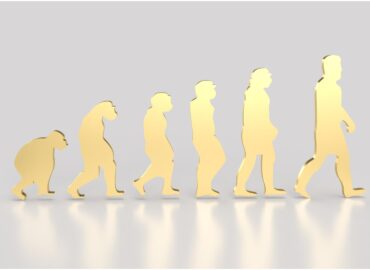How to Develop a Personalized Learning Program for Your Team
Imagine this: your team members are constantly growing, developing new skills, and feeling truly engaged in their work. Sounds like a dream, right? Well, it’s possible—with the right Personalized Learning Program in place.
In today’s fast-paced workplace, the traditional, one-size-fits-all training approach no longer cuts it. Employees want learning experiences tailored to their unique needs, interests, and career goals. And companies that prioritize this see real results. In fact, 76% of employees say they’re more engaged when their training is personalized. (Source: Matsh)
So, how can you build a Personalized Learning Program that empowers your team? Let’s break it down step by step.
Why a Personalized Learning Program Matters?
Think back to a time when you had to sit through a mandatory training session that wasn’t relevant to your role. Frustrating, right? That’s exactly why personalizing learning matters.
Studies show that companies with strong learning cultures see 26% higher employee productivity and 24% higher retention rates (Source: Vorecol). Employees are more engaged when learning experiences feel relevant to them. Plus, a customized approach helps close skill gaps and keeps your workforce ahead of industry changes.
7 Steps to Develop a Personalized Learning Program for Your Team
1. Understand Individual Learning Needs
Every employee has different strengths, goals, and learning preferences. The first step is getting to know them.
(i) Conduct one-on-one meetings to discuss career aspirations.
(ii) Use self-assessments or surveys to identify skill gaps.
(iii) Encourage employees to share what they want to learn.
Why this works: Employees feel valued when their personal growth is considered, increasing motivation and engagement.
2. Assess Current Skill Levels
Before building a learning plan, you need a clear picture of where your team stands.
(i) Use skills assessments or competency frameworks.
(ii) Analyze performance data to identify weak areas.
(iii) Leverage 360-degree feedback from peers and managers.
Pro Tip: A well-structured skill assessment helps you tailor training to actual needs instead of relying on guesswork.
3. Set Clear, Personalized Learning Goals
Once you understand each team member’s needs, set specific learning objectives. These should align with both personal career growth and business goals.
Example Goals:
(i) Learn advanced data analytics within three months.
(ii) Improve leadership skills through mentorship and coaching.
(iii) Master a new software tool relevant to the role.
When learning feels meaningful, employees are more likely to stay engaged.
4. Provide a Variety of Learning Resources
Not everyone learns the same way. Some prefer hands-on experience, while others enjoy reading or watching videos. Offer diverse resources to cater to different styles:
(i) E-learning platforms (Coursera, LinkedIn Learning, Udemy)
(ii) Workshops and webinars
(iii) Microlearning (short, digestible lessons)
(iv) Mentorship programs
Did you know that 70% of employees prefer learning on the job rather than in a formal setting? So, blend structured learning with real-world application.
5. Leverage Technology for Adaptive Learning
AI-driven learning platforms like Degreed and EdApp can personalize content based on employee progress. These tools:
(i) Adjust difficulty levels based on user performance.
(ii) Offer real-time feedback.
(iii) Recommend relevant courses based on interests.
Tech-driven learning isn’t just more efficient—it keeps employees engaged by making content interactive and dynamic.
6. Foster a Culture of Peer Learning
People learn best when they share knowledge with others. Encourage collaborative learning through:
(i) Team projects that require new skill applications.
(ii) Peer mentorship where experienced employees guide newcomers.
(iii) Internal knowledge-sharing sessions.
A Personalized Learning Program shouldn’t be an isolated experience—it should bring your team together.
7. Track Progress and Offer Feedback
A program without progress tracking is like driving without a map. Regularly check in on employee development through:
(i) Quarterly skill assessments
(ii) One-on-one coaching sessions
(iii) Real-time feedback from managers and peers
And don’t forget to celebrate wins! Whether it’s mastering a new skill or completing a certification, recognition keeps employees motivated.
According to a Gallup study, employees who receive regular feedback are 3x more engaged than those who don’t.
The Benefits of a Personalized Learning Program
- Higher Engagement: Employees feel invested in their own development.
- Better Performance: Learning is directly tied to real-world applications.
- Increased Retention: Employees stay longer when they see growth opportunities.
- Adaptability: Your team stays ahead of industry trends and technology.
When learning is personal, work becomes more meaningful.
Make Learning Personal, Make Growth Inevitable
A Personalized Learning Program isn’t just another HR initiative—it’s a game-changer for both employees and businesses. When you empower your team with learning tailored to their needs, you create a culture of continuous improvement, engagement, and long-term success.
Ready to build a stronger, more skilled workforce? Start personalizing learning today.



